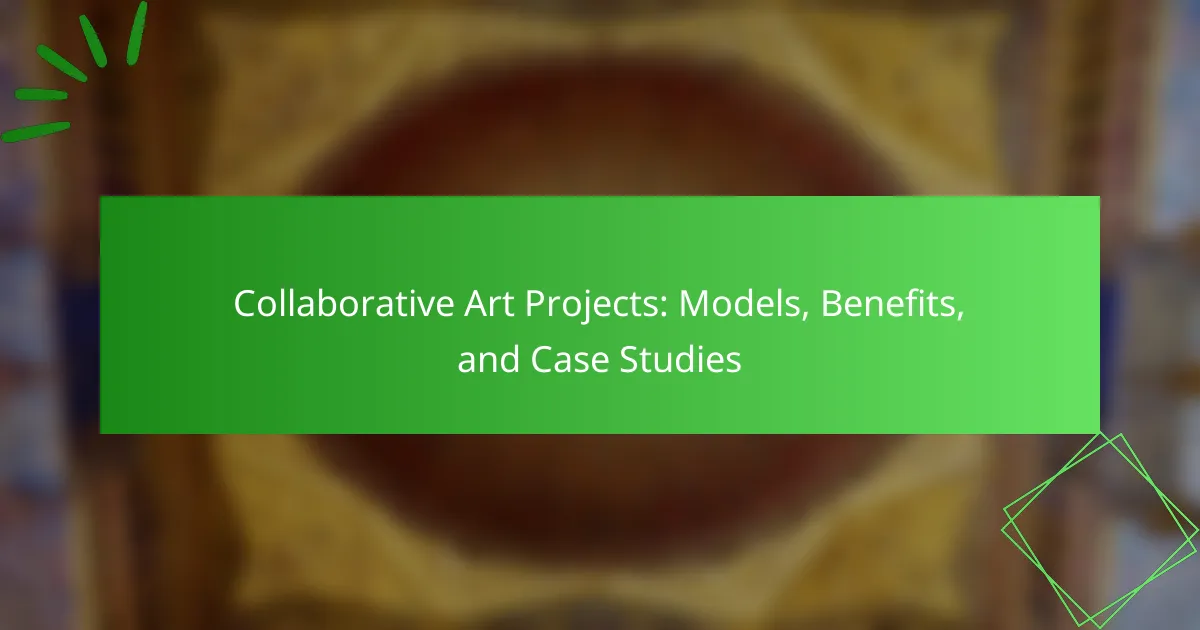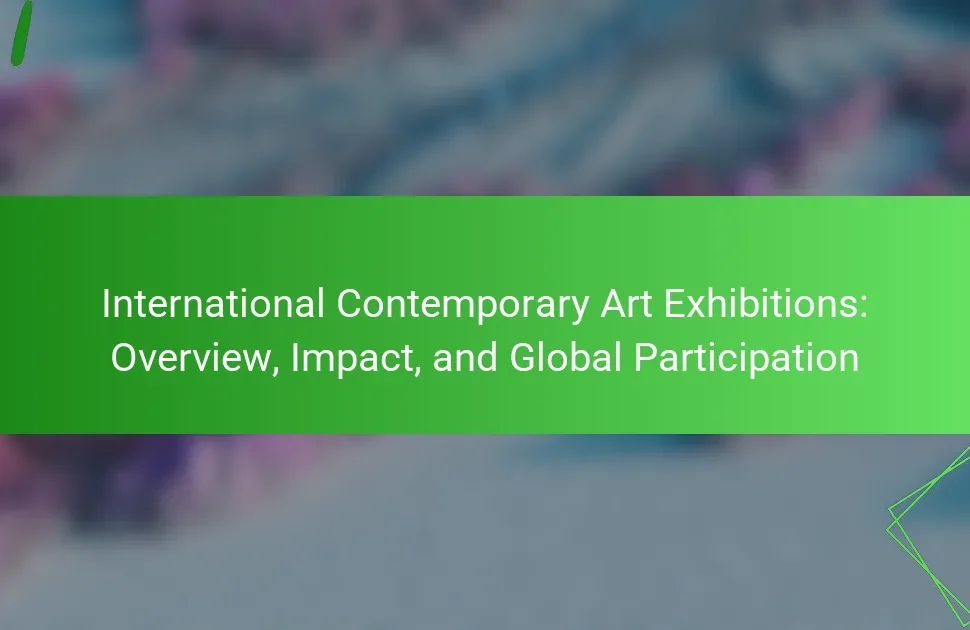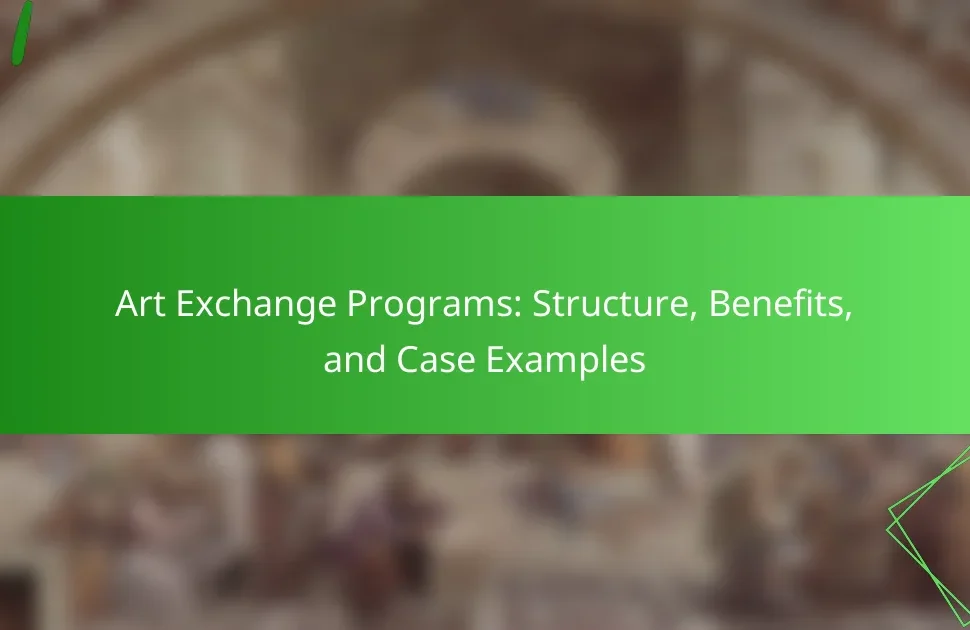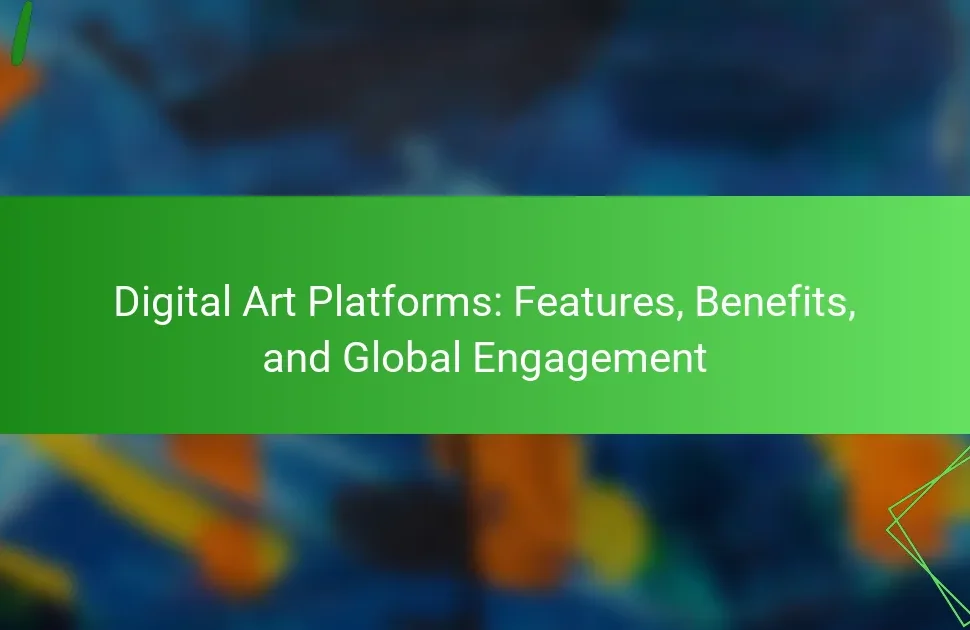Collaborative art projects enhance creativity, foster community connections, and promote emotional well-being. This article explores various models of collaboration, highlights the benefits for participants, examines cultural influences, and showcases notable case studies. Additionally, it discusses the role of technology and addresses common pitfalls in these projects, while considering future trends in the collaborative art landscape.
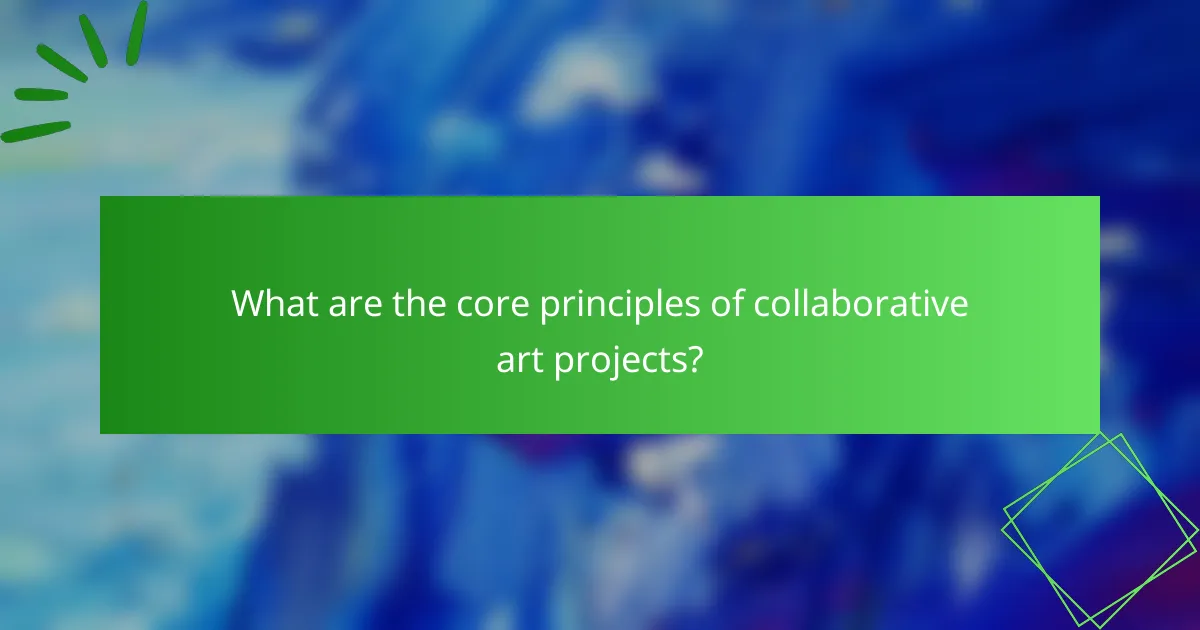
What are the core principles of collaborative art projects?
Collaborative art projects thrive on shared creativity, communication, and mutual respect among participants. Core principles include inclusivity, where diverse voices contribute, and transparency, which fosters trust. Additionally, adaptability is crucial, allowing projects to evolve based on participant feedback. These principles enhance collaboration and ensure that the resulting artwork reflects collective input and perspectives.
How do collaborative art projects foster community engagement?
Collaborative art projects foster community engagement by bringing individuals together to create shared experiences. These projects enhance social bonds, promote inclusivity, and encourage dialogue among diverse participants.
They often result in public art installations that reflect community identity, fostering pride and ownership. For instance, community murals can transform neglected spaces into vibrant areas, attracting visitors and stimulating local economies.
Additionally, collaborative art initiatives can facilitate workshops that teach new skills, empowering participants and building confidence. This shared learning environment strengthens relationships and encourages ongoing collaboration.
Overall, collaborative art projects serve as a catalyst for positive social change, enhancing community cohesion and engagement through creative expression.
Why is diversity important in collaborative art projects?
Diversity is crucial in collaborative art projects as it fosters creativity and innovation. Diverse perspectives lead to unique ideas and solutions, enhancing the overall quality of the artwork. Collaboration among individuals from various backgrounds promotes cultural exchange and understanding, resulting in richer artistic expressions. Additionally, projects that embrace diversity often resonate more with wider audiences, increasing their impact and relevance in society.
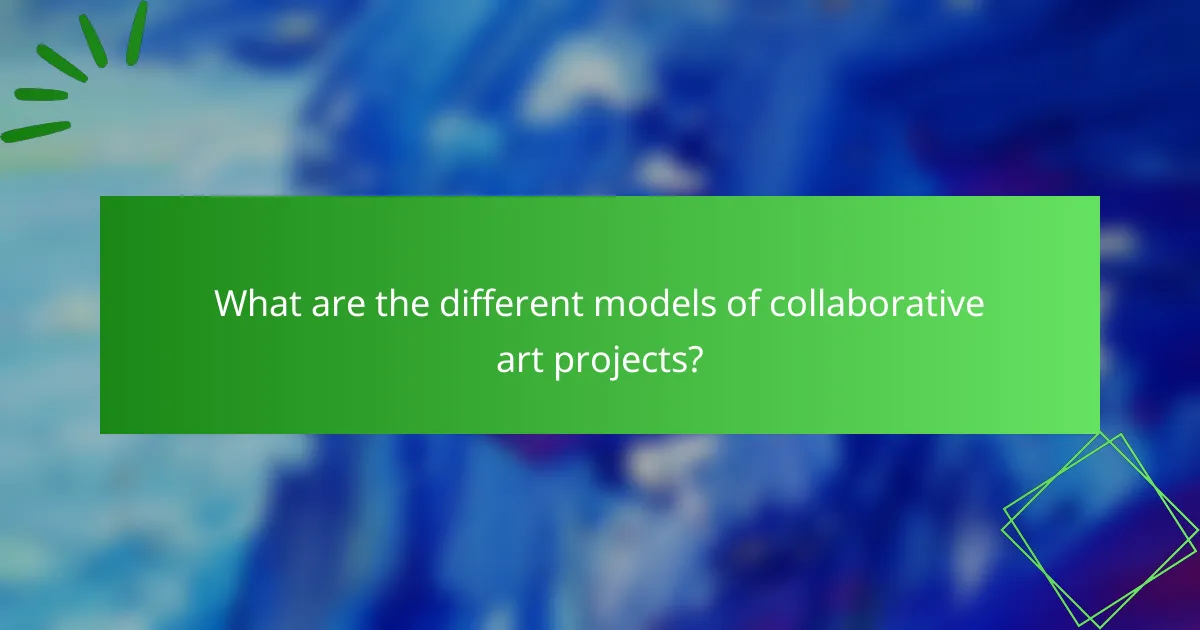
What are the different models of collaborative art projects?
Collaborative art projects can take various models, including community-based, artist-led, and institutional collaborations. Each model fosters unique interactions and outcomes.
Community-based projects engage local participants to create art that reflects collective experiences. Artist-led collaborations often involve established artists working with emerging talents, enhancing skills and creativity. Institutional collaborations typically occur between organizations and artists, focusing on larger-scale projects that may include exhibitions or public installations.
These models highlight the adaptability of collaborative art, promoting inclusivity and diverse perspectives.
How do artist-led initiatives differ from community-led projects?
Artist-led initiatives focus on the vision and expertise of the artist, while community-led projects prioritize the needs and input of the community. Artist-led initiatives often emphasize individual creativity and artistic expression, whereas community-led projects foster collaboration among community members to address shared goals.
Artist-led projects may have a more defined aesthetic and direction, while community-led projects adapt based on collective feedback and participation. The engagement in community-led projects can lead to a stronger sense of ownership among participants, enhancing community cohesion. Each model has unique benefits, contributing to the overall landscape of collaborative art projects.
Which platforms are commonly used for collaborative art creation?
Common platforms for collaborative art creation include online tools that facilitate teamwork and creativity. Popular options are Google Jamboard, Miro, and Adobe Creative Cloud, which offer features for real-time collaboration. Additionally, platforms like Behance and ArtStation allow artists to share and develop projects collectively. These platforms enhance accessibility and streamline the creative process for diverse teams.
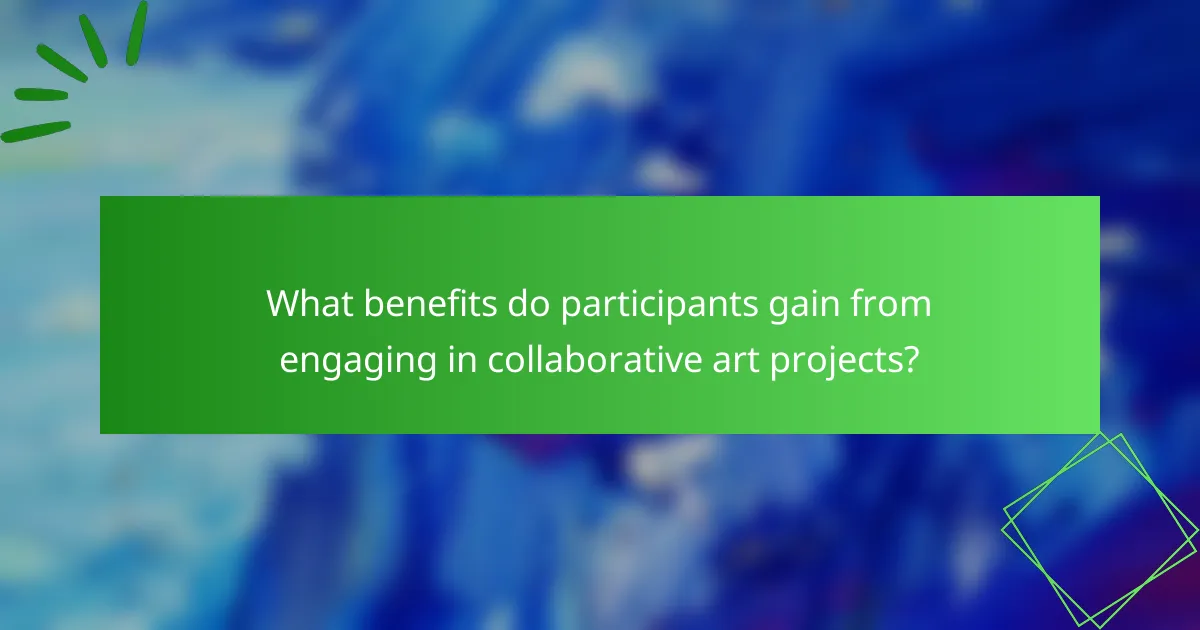
What benefits do participants gain from engaging in collaborative art projects?
Participants in collaborative art projects gain enhanced creativity, improved social connections, and increased emotional well-being. These projects foster teamwork and communication skills, allowing individuals to express themselves collectively. Additionally, participants often experience a sense of accomplishment and ownership over the final artwork, contributing to personal growth. Engaging in these projects can also lead to community building and cultural exchange, enriching participants’ perspectives and experiences.
How can collaborative art projects enhance individual creativity?
Collaborative art projects significantly enhance individual creativity by fostering diverse perspectives and ideas. Participants experience increased motivation and inspiration through shared goals, leading to innovative outcomes. Engaging with others encourages risk-taking and experimentation, which are crucial for creative growth. Additionally, the social interaction inherent in these projects helps build confidence and expands artistic skills.
What role does collaboration play in skill development for artists?
Collaboration significantly enhances skill development for artists by fostering creativity and knowledge exchange. Through collaborative art projects, artists learn diverse techniques and perspectives, which can lead to innovative outcomes.
Working alongside others encourages experimentation and risk-taking, essential for artistic growth. For instance, artists may combine different styles, resulting in unique artworks that reflect a blend of influences.
Case studies show that artists involved in collaborative projects often report increased confidence and motivation. This shared experience can create a supportive environment that nurtures individual creativity while benefiting the collective.
Moreover, collaboration can lead to networking opportunities, opening doors for future projects and exhibitions. This interconnectedness is vital in the art community, as it allows for continuous learning and development.

How do cultural contexts influence collaborative art projects?
Cultural contexts significantly shape collaborative art projects by influencing themes, communication styles, and participant engagement. Diverse cultural backgrounds bring unique perspectives, enhancing creativity and fostering inclusivity. In projects like community murals, local traditions and values guide artistic direction, creating a sense of belonging. Additionally, cultural contexts affect the collaborative process, as varying norms dictate how artists interact and negotiate roles. Understanding these dynamics can lead to more impactful and resonant art outcomes.
What challenges do artists face in cross-cultural collaborations?
Artists face several challenges in cross-cultural collaborations, including communication barriers, differing artistic values, and logistical complexities. These obstacles can hinder creative synergy and project success.
Communication barriers arise from language differences, which can lead to misunderstandings. Differing artistic values may stem from cultural interpretations of art, affecting collaboration dynamics. Logistical complexities, such as coordinating schedules across time zones, can further complicate these projects.
Additionally, artists may encounter resistance to new ideas from their cultural backgrounds. This resistance can limit the scope of creativity and innovation in collaborative efforts.
Overall, overcoming these challenges requires open dialogue, cultural sensitivity, and a willingness to adapt.
How can local traditions shape collaborative art practices?
Local traditions significantly influence collaborative art practices by providing cultural context and shared values. These traditions foster community engagement and enhance creativity through collective storytelling. For example, artists may incorporate local folklore or techniques, enriching the collaborative process. Such integration promotes a unique artistic identity, reflecting the heritage and perspectives of the community involved. This approach not only strengthens social bonds but also elevates the artistic output, making it more resonant and meaningful.
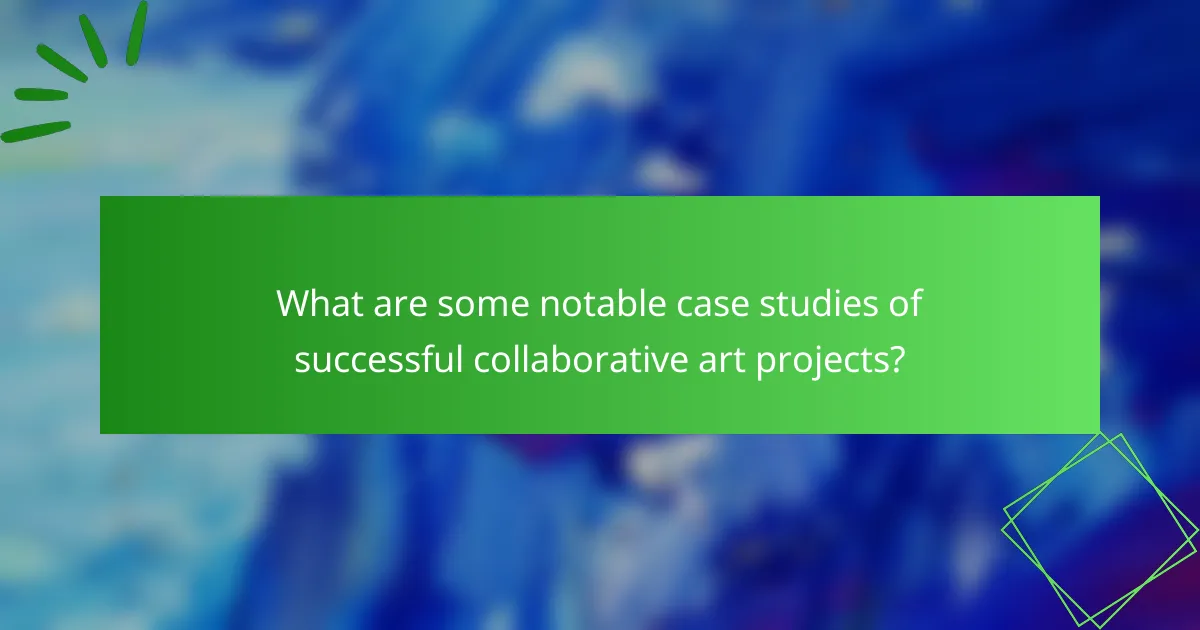
What are some notable case studies of successful collaborative art projects?
Notable case studies of successful collaborative art projects include “The Obliteration Room” by Yayoi Kusama, which transformed a white room into a vibrant space through participant interaction. Another example is “The People’s Choice” by the Chicago-based artist Theaster Gates, which engaged community members to create a public art installation. “Inside Out” by JR invited people worldwide to share their portraits, fostering a global dialogue on identity. Lastly, “The 596 Acres” project in New York City empowered communities to reclaim vacant lots for public use through collaborative art and activism. These projects highlight the benefits of community engagement and shared creativity.
Which collaborative art projects have made a significant social impact?
Collaborative art projects that have made a significant social impact include initiatives like the “Inside Out Project,” which encourages people to share their stories through large-scale photographic portraits. Another notable project is “The Mural Project,” which transforms urban spaces and fosters community engagement. Additionally, “The People’s Climate March” art installations raise awareness about climate change. These projects demonstrate how art can unite communities and drive social change.
What lessons can be learned from failed collaborative art initiatives?
Failed collaborative art initiatives teach valuable lessons about communication, planning, and adaptability. Clear communication among artists and stakeholders prevents misunderstandings that can derail projects. Effective planning, including setting realistic goals and timelines, enhances project feasibility. Flexibility in adapting to challenges and feedback fosters a more resilient collaborative process. Additionally, evaluating participant roles and contributions ensures all voices are heard, improving engagement and outcomes. These lessons highlight the importance of structured collaboration for successful artistic endeavors.

How can technology enhance collaborative art projects?
Technology enhances collaborative art projects by facilitating communication, streamlining workflows, and providing innovative tools. Digital platforms enable artists to share ideas in real-time, regardless of location. Collaborative software can manage project timelines and tasks, ensuring everyone stays on track. Tools like virtual reality create immersive environments for artistic exploration, allowing for unique experiences. Additionally, online galleries showcase collective works to a broader audience, increasing visibility and engagement. Overall, technology fosters creativity and connection among artists, leading to richer collaborative outcomes.
What tools are essential for virtual collaborative art creation?
Essential tools for virtual collaborative art creation include digital platforms, communication apps, and design software. These tools enhance teamwork and creativity. Popular platforms like Miro and Figma allow real-time collaboration. Communication tools such as Slack or Zoom facilitate discussions and feedback. Additionally, design software like Adobe Creative Cloud enables artists to create and share their work seamlessly.
How has social media changed the landscape of collaborative art?
Social media has transformed collaborative art by facilitating global connections and real-time interaction among artists. Artists can now collaborate across distances, sharing ideas instantly and creating works that reflect diverse perspectives. Platforms like Instagram and TikTok enable artists to showcase their projects, gather feedback, and engage audiences, enhancing visibility and support. Additionally, social media fosters community building, allowing for collective creativity that was previously challenging to achieve. This shift has resulted in innovative art forms and increased accessibility, democratizing the creative process.
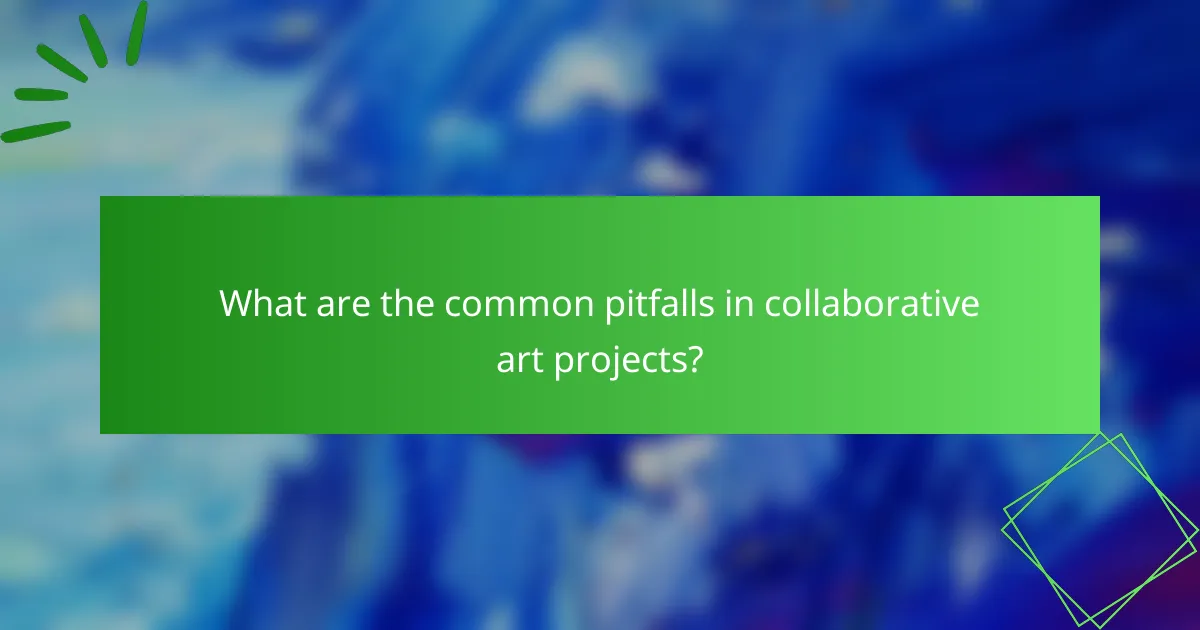
What are the common pitfalls in collaborative art projects?
Common pitfalls in collaborative art projects include lack of clear communication, differing artistic visions, and inadequate planning. These issues can lead to misunderstandings and conflicts among team members. Additionally, failure to define roles and responsibilities can hinder progress. Time management challenges often arise, causing delays and frustration. Lastly, not establishing a cohesive vision can result in a disjointed final product.
How can miscommunication affect collaboration outcomes?
Miscommunication can significantly hinder collaboration outcomes in collaborative art projects. It can lead to misunderstandings about artistic vision, project goals, and individual roles. This often results in conflicts, decreased morale, and ultimately, project failure. Effective communication is essential to ensure all participants are aligned and can contribute their unique talents effectively.
What strategies can mitigate conflicts among collaborators?
Effective strategies to mitigate conflicts among collaborators include establishing clear communication, setting shared goals, and fostering a culture of respect. Encouraging regular feedback sessions can help address issues early. Additionally, employing conflict resolution techniques, such as mediation, can facilitate understanding and compromise. Finally, defining roles and responsibilities can minimize misunderstandings and promote accountability.
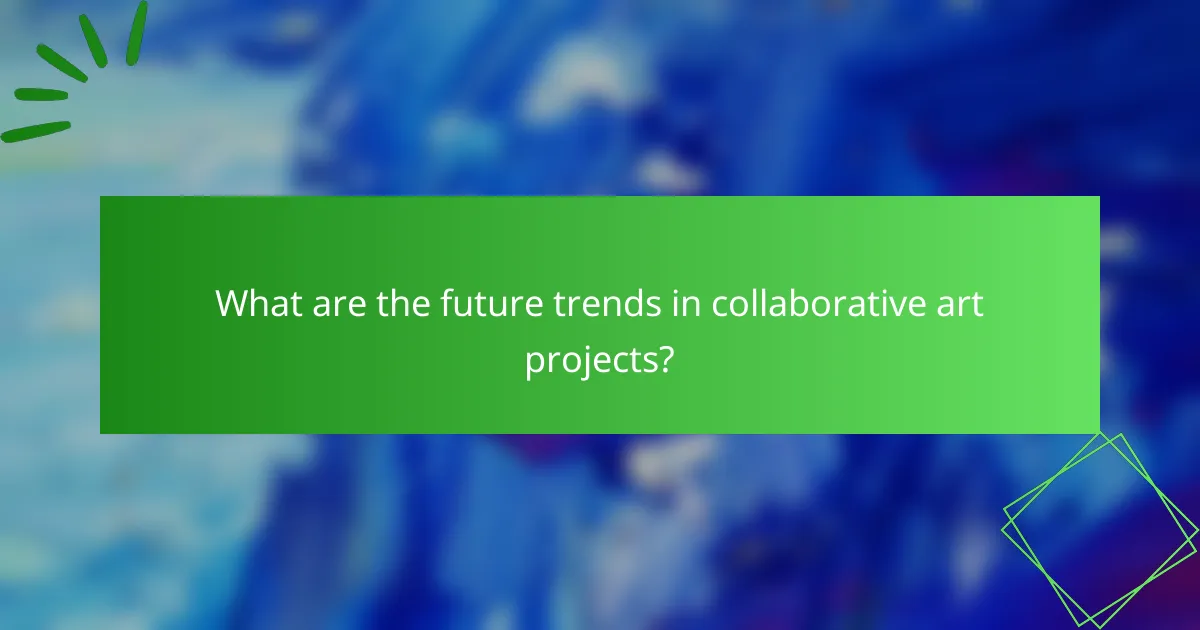
What are the future trends in collaborative art projects?
Future trends in collaborative art projects include increased use of technology, community engagement, and interdisciplinary approaches. Artists are leveraging digital platforms for remote collaboration, expanding their reach and audience. Projects are increasingly focused on social issues, fostering inclusivity and diversity through community participation. Additionally, sustainability is becoming a key consideration, with artists exploring eco-friendly materials and practices. As a result, collaborative art projects are evolving to address contemporary challenges while enhancing creative expression and collective experience.
How is sustainability being integrated into collaborative art practices?
Sustainability is increasingly integrated into collaborative art practices through eco-conscious materials, community engagement, and innovative project designs. Artists prioritize sustainable methods to reduce environmental impact while fostering social connections. For example, projects often utilize recycled materials and aim to educate participants about ecological issues. This approach not only enhances artistic expression but also promotes awareness of sustainability in communities. As a result, collaborative art becomes a platform for environmental advocacy and social change.
What emerging technologies are shaping the future of collaborative art?
Emerging technologies like virtual reality, artificial intelligence, and blockchain are transforming collaborative art. These innovations enhance creativity, streamline processes, and foster community engagement.
Virtual reality allows artists to create immersive experiences, enabling collaboration in shared digital spaces. Artificial intelligence aids in generating unique artistic elements, pushing creative boundaries. Blockchain ensures transparency and ownership, empowering artists in collaborative projects.
These technologies are reshaping how artists interact, share, and create, leading to more dynamic and inclusive art forms.
What best practices should artists follow for successful collaboration?
Artists should prioritize clear communication, mutual respect, and defined roles for successful collaboration. Establishing shared goals enhances creativity and ensures all participants are aligned. Regular feedback fosters an open environment, allowing for adjustments and improvements. Documenting agreements and processes helps maintain transparency and accountability throughout the project.
